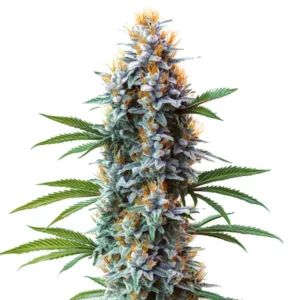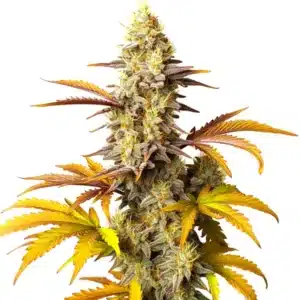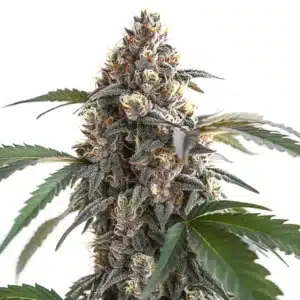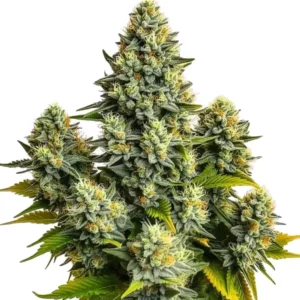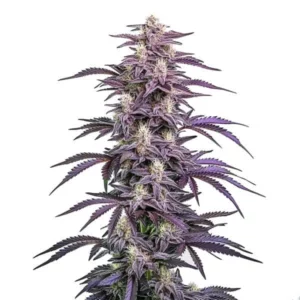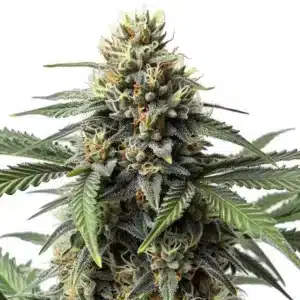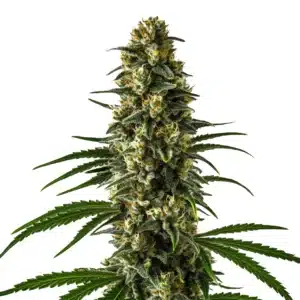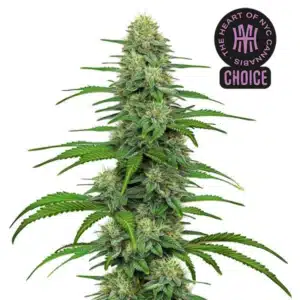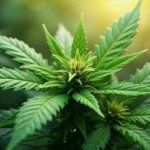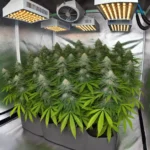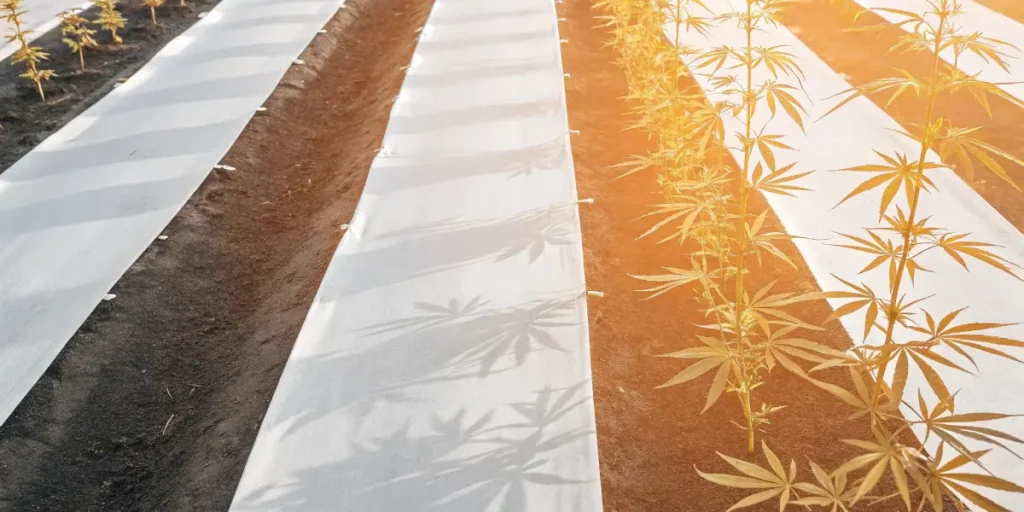
Leaf Turgor and Cannabis Yield Quality
Leaf turgor plays a vital role in the health and quality of your cannabis plants. This term refers to the pressure of the cell contents against the cell wall, which helps maintain the plant’s rigidity. For cannabis growers, maintaining optimal leaf turgor can directly affect yield quality.
When leaf turgor is high, cannabis plants stand tall and firm, indicating adequate hydration. This condition supports better photosynthesis, leading to robust growth and high-quality yields. Conversely, low turgor pressure can result in wilting, signaling a need for immediate attention.
Recommended Strains
Blue Cheese
|
|
THC | 16% - 20% (Medium) |
|
|
Type | Feminized |
|
|
Yield | High |
|
|
Phenotype | 80% Indica / 20% Sativa |
Blue Cheese Autoflower
|
|
THC | 14% - 16% (Medium) |
|
|
Type | Autoflowering |
|
|
Yield | Medium |
|
|
Phenotype | 80% Indica / 20% Sativa |
To ensure top-notch cannabis yield quality, growers should focus on optimizing leaf turgor. This involves managing water intake, ambient humidity, and nutrient levels. By doing so, you can enhance the potency and overall health of your cannabis plants.
Leaf Turgor Effects on Cannabis Yield
Leaf turgor significantly impacts cannabis yield. It affects how efficiently a plant can photosynthesize, which is crucial for growth and bud development. High turgor pressure allows leaves to capture more sunlight, maximizing energy production.
For example, a cannabis strain like Chemdawg benefits from optimal leaf turgor. This strain is known for its high yield and potency, which can be attributed to healthy leaf turgor supporting vigorous growth and resin production.
The leaf turgor effects on cannabis yield are profound, as they influence the plant’s ability to withstand environmental stressors. With steady turgor pressure, plants can maintain their structural integrity, supporting heavy bud production. This resilience is crucial during the flowering stage when nutrient demands are high.
Additionally, leaf turgor and cannabis yield quality are interconnected, as optimal turgor contributes to the plant’s overall vigor. This vitality translates to more robust branches capable of supporting larger buds, ultimately enhancing the harvest’s weight and quality.
Impact on Cannabis Potency
The potency of cannabis is closely linked to leaf turgor. When turgor is maintained, the plant’s metabolic processes are optimized, leading to higher concentrations of cannabinoids and terpenes. This results in stronger, more aromatic buds.
For potent strains like Blue Dream, maintaining leaf turgor is essential. This strain’s balanced effects and rich terpene profile are enhanced by optimal plant health, driven by good turgor.
The impact of leaf turgor on cannabis potency cannot be overstated. High turgor facilitates efficient nutrient transport within the plant, which is critical for synthesizing complex phytochemicals. These compounds contribute to a strain’s unique effects and flavor profile.
Furthermore, maintaining leaf turgor for better cannabis quality ensures that plants are less susceptible to stress-induced potency loss. A stable internal environment allows for the uninterrupted production of active compounds, leading to consistently potent harvests.
Promos & Deals
Cannabis Leaf Turgor Optimization Techniques
Optimizing leaf turgor involves several strategies. First, ensure your cannabis plants receive adequate water without overwatering. The right balance prevents root rot and maintains optimal turgor.
Humidity also plays a role. In a controlled environment, keeping humidity levels between 40-60% can help sustain leaf turgor. This creates an ideal setting for plants like Girl Scout Cookies, known for its resilience and high-quality yields.
Employing cannabis leaf turgor optimization techniques is essential for achieving consistent results. Techniques such as mulching can help retain soil moisture, reducing water stress during dry periods. This practice complements regular watering schedules and supports constant turgor pressure.
Additionally, integrating technology like soil moisture sensors can provide real-time data, allowing growers to make informed decisions. These devices help prevent over or under-watering, ensuring leaf turgor remains stable throughout the plant’s life cycle.
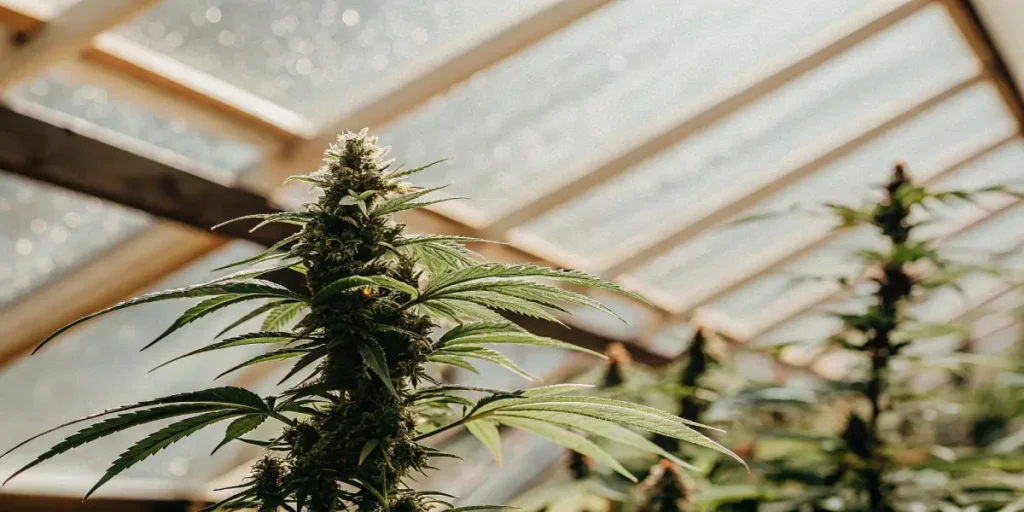
Water and Nutrient Management
Watering schedules are crucial for leaf turgor. It’s best to water in the morning, allowing plants to absorb moisture before the heat of the day. This practice helps maintain turgor pressure and prevents wilting.
Nutrients also influence turgor. A balanced nutrient mix supports cell structure and function. Over-fertilization, however, can harm plants, so it’s important to follow a proper feeding schedule.
Effective water and nutrient management is a cornerstone of maintaining leaf turgor for better cannabis quality. By tailoring nutrient solutions to the plant’s growth stage, growers can ensure that essential minerals are available when needed, supporting healthy cell function.
Moreover, adjusting water pH to the optimal range for cannabis can enhance nutrient uptake and turgor maintenance. This practice prevents nutrient lockout, ensuring plants have access to the compounds necessary for robust growth and high yield quality.
- Water plants early in the day for best results.
- Maintain humidity levels between 40-60% for optimal turgor.
- Use a balanced nutrient mix to support plant health.
- Monitor soil moisture to prevent overwatering.
Maintaining Leaf Turgor for Better Cannabis Quality
Consistent leaf turgor is key to producing high-quality cannabis. By maintaining the right conditions, growers can ensure their plants remain healthy and productive throughout the growing cycle.
Environmental control is essential. Proper ventilation, temperature management, and light exposure all contribute to maintaining leaf turgor. These factors influence the plant’s ability to retain moisture and resist stress.
Maintaining leaf turgor for better cannabis quality requires attention to microclimates within the grow area. Adjusting factors like airflow and light intensity can help create uniform conditions, reducing stress and promoting even growth across all plants.
Besides, knowing the relationship between leaf turgor and cannabis plant health allows growers to anticipate and mitigate potential issues. Regular monitoring and adjustments ensure that plants are consistently supported, leading to premium yield quality.
Relationship Between Leaf Turgor and Plant Health
Healthy leaf turgor indicates a well-hydrated and nourished plant. This condition supports robust growth, leading to larger yields and better-quality cannabis. Strains like Chemdawg thrive under such conditions, producing dense, resin-rich buds.
For first-time growers, ensuring adequate turgor can be a learning curve. Observing plant responses to watering and environmental changes can guide adjustments in care routines.
Knowing the relationship between leaf turgor and cannabis plant health is crucial for long-term success. By recognizing signs of stress early, growers can take proactive measures to adjust care protocols, minimizing the risk of yield loss.
Experienced growers leverage their knowledge of leaf turgor and cannabis yield quality to refine cultivation techniques. This expertise enables them to maintain optimal plant health, resulting in consistently high-quality harvests that meet market demands.
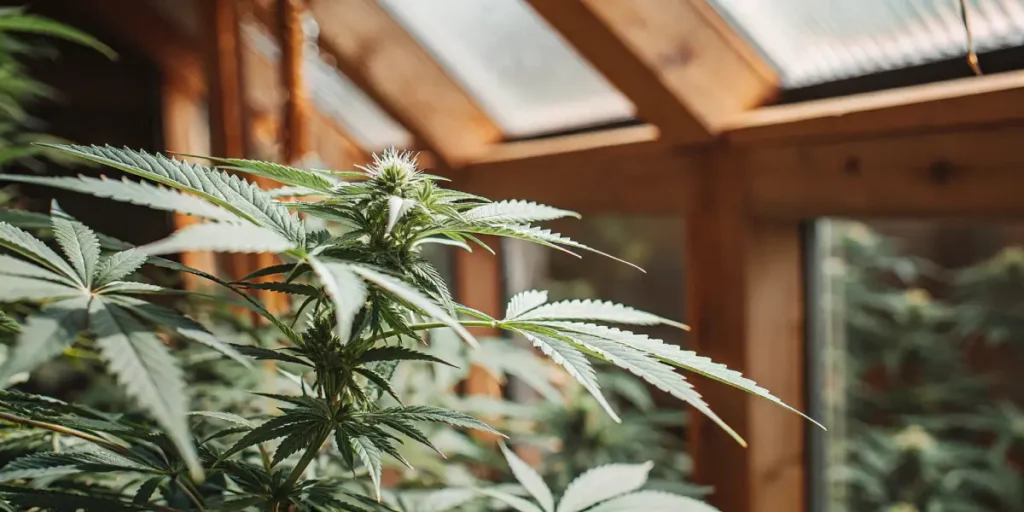
FAQs
How does leaf turgor affect cannabis yield quality?
Leaf turgor affects cannabis yield quality by influencing the plant’s ability to photosynthesize effectively. High turgor pressure allows leaves to capture more light, leading to increased energy production and growth. This results in larger, more potent yields.
Growers who maintain optimal turgor levels can expect healthier plants and better-quality buds. Monitoring plant conditions and adjusting care practices accordingly are critical for maximizing yield.
The function of leaf turgor in cannabis yield quality also extends to pest and disease resistance. Strong turgor pressure can deter pests and enhance the plant’s natural defenses, reducing the need for chemical interventions.
Additionally, knowing the nuances of leaf turgor effects on cannabis yield allows growers to predict and optimize harvest outcomes. This foresight is invaluable for planning and executing successful cultivation cycles.
What are the signs of low leaf turgor in cannabis plants?
Signs of low leaf turgor include wilting leaves that may appear droopy or limp. This condition indicates that the plant is not receiving enough water or that environmental factors are affecting its ability to retain moisture.
Addressing low turgor promptly by adjusting watering schedules and environmental conditions can help restore plant health and prevent yield loss.
Additional signs of low leaf turgor include leaf curl and discoloration, which can indicate nutrient deficiencies linked to inadequate water transport. Immediate action is required to prevent long-term damage to the plant.
Monitoring environmental factors that contribute to low turgor, such as extreme temperatures or low humidity, can guide interventions. By maintaining optimal conditions, growers can support plant recovery and preserve yield quality.
Can environmental conditions impact leaf turgor?
Yes, environmental conditions significantly impact leaf turgor. Factors like humidity, temperature, and light exposure influence a plant’s ability to maintain adequate turgor pressure.
Controlled environments allow growers to optimize these conditions, ensuring plants remain healthy and productive. For strains like Blue Dream, proper environmental management is crucial for maintaining turgor and maximizing yield quality.
Fluctuations in environmental conditions can disrupt leaf turgor, leading to stress and potential yield loss. Implementing systems to stabilize these variables helps maintain a consistent growing environment, benefiting overall plant health.
By knowing the impact of environmental conditions on leaf turgor and cannabis yield quality, growers can implement corrective measures swiftly, ensuring that plants remain vigorous and productive throughout their life cycle.
How can growers optimize leaf turgor in cannabis plants?
Growers can optimize leaf turgor by ensuring consistent watering and maintaining appropriate humidity levels. Balancing nutrient intake and monitoring environmental conditions are also important strategies.
Utilizing these techniques helps maintain plant health, leading to high-quality yields. For first-time growers, starting with a resilient strain like Girl Scout Cookies can provide a good learning experience.
Implementing cannabis leaf turgor optimization techniques such as crop rotation and companion planting can also enhance soil health, indirectly supporting stable turgor pressure. These practices improve nutrient availability and soil moisture retention.
Additionally, conducting regular soil tests can provide insights into nutrient levels and pH, guiding adjustments that promote optimal leaf turgor and cannabis plant health, ultimately leading to superior yield quality.
Why is leaf turgor important for cannabis potency?
Leaf turgor is important for cannabis potency because it supports the plant’s metabolic processes. High turgor pressure ensures efficient photosynthesis and nutrient uptake, leading to increased cannabinoid and terpene production.
This results in more potent and aromatic buds. Maintaining optimal turgor is essential for growers aiming to produce high-quality, potent cannabis.
Furthermore, the impact of leaf turgor on cannabis potency extends to the plant’s stress response. A well-maintained turgor allows for better resilience against environmental fluctuations, preserving the integrity of active compounds.
By focusing on maintaining leaf turgor for better cannabis quality, growers can ensure their crops consistently meet potency standards, satisfying both personal and commercial objectives.


